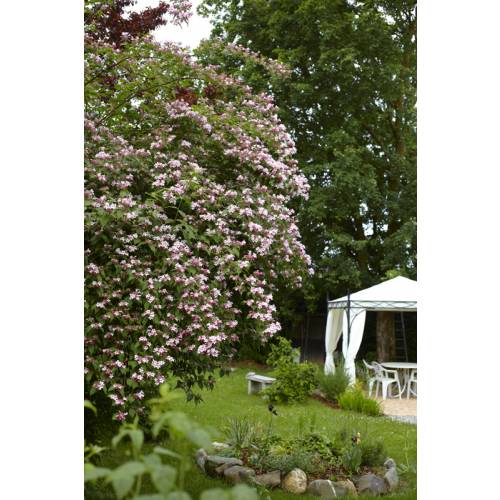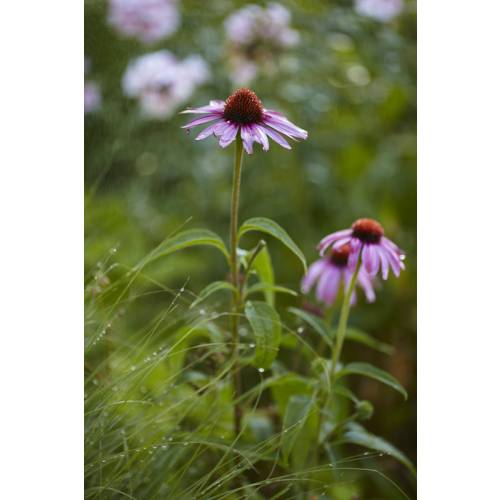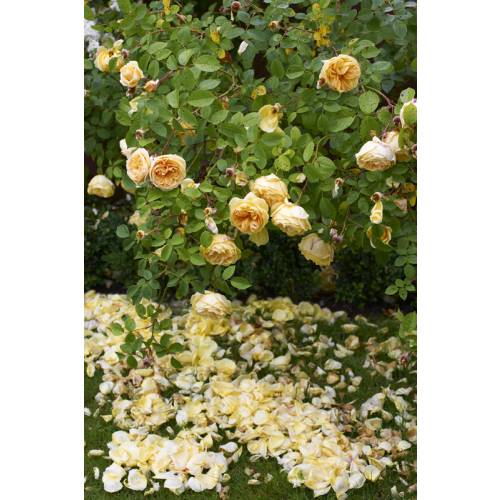
Ecological Garden
The right ecological methods
- Details
-
To go from the theory to the practical may seem complicated when we want a beautiful, healthy, living garden. However, it is possible, providing you take it little by little, and above all, to take a good look!
First of all, life
Do not be scared of letting grow what you do not know! There are not weeds as such, only plants that disturb. Learn to know the natural vegetal life in your garden and locate the plants, which need controlling. In that category, there are surely some which will not cause any great problem, or their blossom will be finally interesting to look at. There will be others, which will be useful to the butterfly larvae, or a small beetle, which only feeds on that plant. In that case, why not "adopt" such inhabitants, which will not cause any damage and support them by offering them a place to stay and feed in your garden? This way you obtain a livelier garden. Little by little, other animals will come by and you will see that your plants will not be damaged by them, quite the contrary!
Small shelters can help encourage the fauna to settle in, in particular ladybirds, bees and chrysoperla, which are all very useful in a garden. Even on a balcony, these shelters will please somebody!
Look after the soil
A natural and healthy garden, it is primarily a living soil. Think about energizing your soil, by bringing in organic matters, such as manure or even better, compost made by yourself. Adopt the automatism "mulch", in always keeping a protective layer on the soil (dead leaves, straw, pruning wastes, etc.). It is under that « blanket » that your soil will thrive, exactly like in the forest.
It is often said that in an ecological garden managed with bio methods, one must not turn the soil over. In reality, the soil needs lightening up, and mechanical devices such as tillers have a tendency to kill underground life. Try alternative means, such as the hand aerator or the curved fork (to scratch the soil). A living soil that is always covered does not need lightening up as much.
Plant wisely
See things on the bright side and look for what will grow the best in your garden. If a plant grows, well it will not entice destructive insects as much as an ill adept and suffering plant would. For nature is great: numerous pests are in fact "cleaners", acting on diseased plants, as several predators do with sick animals. A plant suited to your area will be healthier and therefore less sensitive to attacks.
Act in a moderate way
As soon as something looks odd (shriveled up leaves for example), do not get out the heavy artillery but observe! This phenomenon isn’t it normal after all. What can possibly cause it? Is there a way of solving it using soft and simple means? This way you will avoid treating unnecessarily, or even making things worse for the plant. Your plant will not die following the attack from a few aphids. However, if they are too many, they can transmit diseases and weaken the plant. Everything is a question of the correct dosage and that is learnt with experience...
Feed cunningly, gentle care
Choose organic fertilizers to bring to your plants what they are lacking, ensuring first that they are definitely lacking in nutrients.
Also, prefer the best fitting solution if you need to act to fight off a disease or a pest. Start by choosing the softer methods, then stronger ones if needed. It is the principle of the gradual answer: to a small attack, a small answer, but for a big risk, a big solution! - Photos (3)



